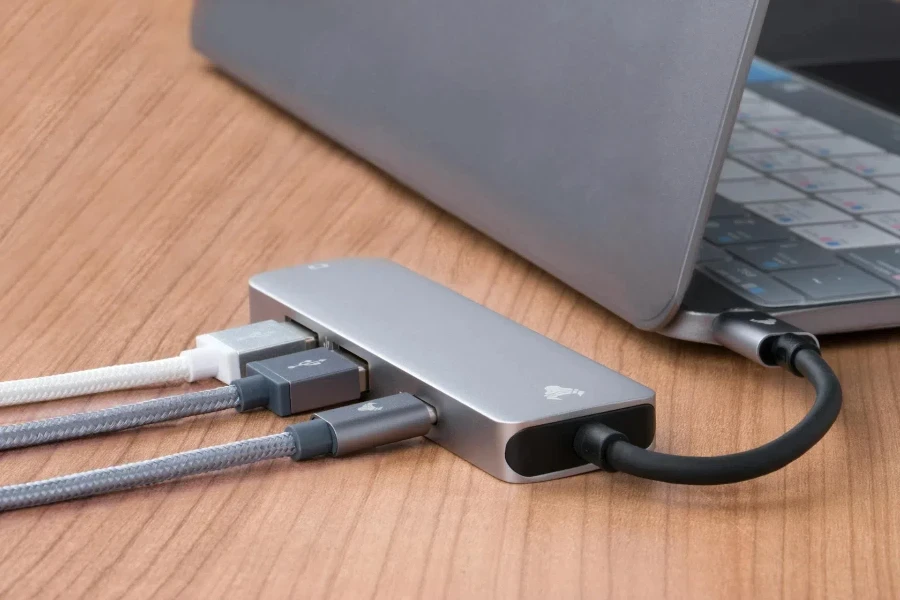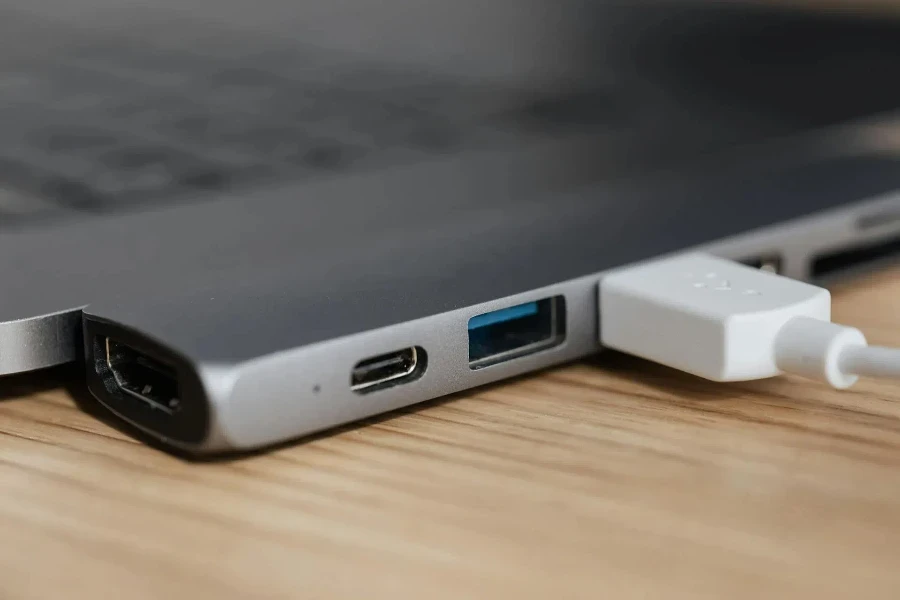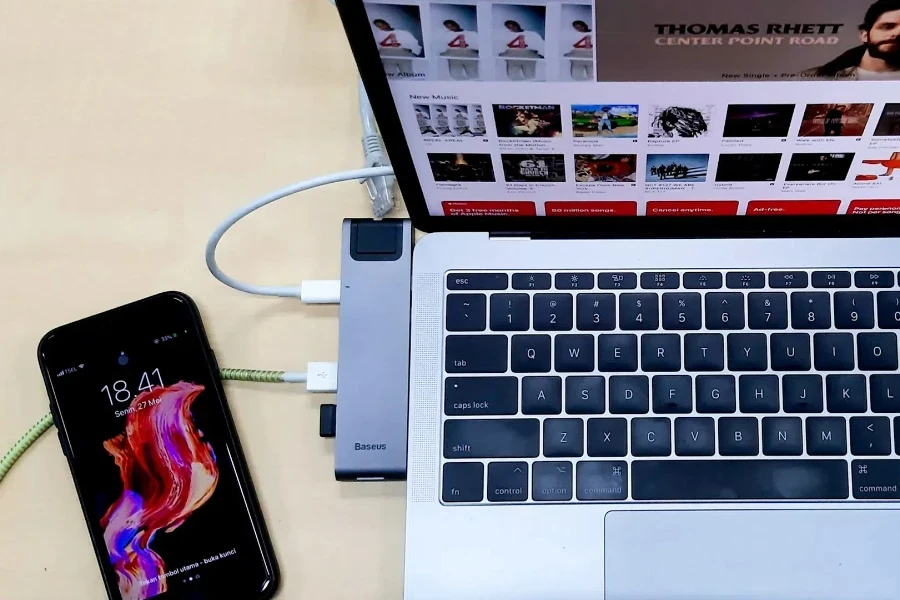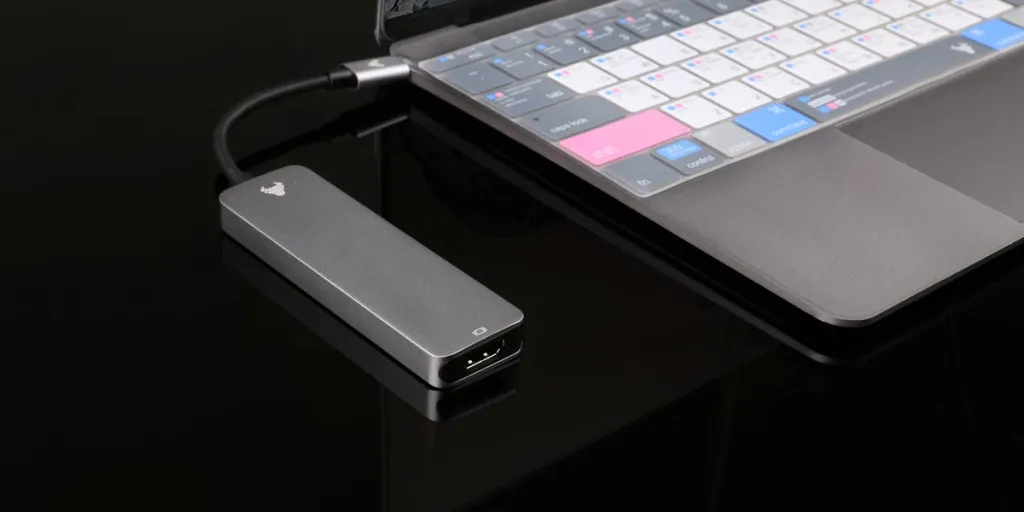PC docking stations have come a long way since their original designs. The first designs were bulky devices that connected to laptops via special slots or ports. However, today’s docking stations are equipped to do everything a user would need for their PC, all through a single USB or Thunderbolt cable.
Modern PC docking stations have even evolved to the point where some models can power notebooks, providing a huge additional convenience. But with so many features packed into one device, choosing which one to source for your business can get tricky fast.
Here, we’ll explain five important features retailers should keep in mind when searching for the right PC docking stations to stock.
Table of Contents
Why now is a great time to enter the PC docking station market
PC stations: 5 things to keep in mind when sourcing
Final words
Why now is a great time to enter the PC docking station market
The PC docking station market is growing fast as more and more consumers seek better flexibility, efficiency, and faster data transfers. According to Grand View Research, the PC docking station market was worth $1.52 billion in 2022 and is forecast to grow at a 6.1% CAGR to $2.44 billion by 2030.
Other important stats relating to the PC docking market include:
- The laptop segment registered the most sales, accounting for an impressive 72.0% revenue share in 2022
- Wired PC docking stations accounted for 73% of the market in 2022, but wireless docking stations are catching up fast, with reports forecasting they will register a 6.4% CAGR
- North America emerged as the dominant regional market for docking stations, with a 37.4% revenue share in 2022
In addition, PC docking stations have attracted a steady search volume in 2024, averaging around 270,000 monthly searches, according to Google Analytics.
PC stations: 5 things to keep in mind when sourcing
1. Port selection and number

The number and type of ports a PC docking station has will be the main deciding factor for consumers.
Here’s a table showing the different types of ports available and the ideal number for a docking station:
| Port type | Description | Recommended number |
| USB-A | The standard USB port for connecting peripherals like external drives, keyboards, and mice | 2-4 |
| USB-C | The newer, reversible USB port that can be used for charging, data transfer, and video output (with Thunderbolt 3 or later) | 1-2 (at least one with power delivery for charging) |
| HDMI | The standard video output for connecting external monitors | 1-2 (can go up to 4, but is not common) |
| DisplayPort | The alternative video output for connecting external monitors. Consumers often use them for higher resolutions and refresh rates. | 1 (can replace one HDMI if it supports Thunderbolt 3) |
| Ethernet | The port for wired connections | 1 |
| SD/microSD Card slot | The port for reading memory cards from cameras or other devices | 1 (optional, but useful for photographers or videographers) |
| 3.5mm AUX Port | The headphone jack for connecting speakers or headphones | 1 (optional, but useful for some users) |
| Power Delivery Input Port (PD-IN) | Port for connecting a laptop charger to provide power to both the docking station and PC | 1 |
Note: The recommended port selection and number depend on the consumer’s needs. For example, if they use multiple external monitors, these customers will need PC stations with enough video outputs. Some docks may come with older ports, like VGA.
2. Design

PC stations often come in two designs: horizontal and vertical. Although both designs are usually similar in terms of features, consumers will likely choose between them based on preference.
For instance, if the consumer is looking for a more ergonomic docking station due to limited workspace, etc., they may prefer a horizontal design. Those with more space will have no problem installing a vertical docking station.
3. Connectivity

Most PC stations today use one of three ports: classic USB-A, the latest USB Type-C, or Thunderbolt. PC stations with Thunderbolt connectors come in two types: Thunderbolt 3 or 4. Because of these port differences, not all laptops support all PC docking stations.
Thankfully, most universal PC docking stations are compatible with Macs, PCs, and Chromebooks as long as consumers have the right ports.
Keep in mind that Thunderbolt docks tend to be more expensive. Also, it’s worth mentioning that laptops without Thunderbolt support can still access these stations if they have USB-4 ports – albeit at lower speeds of around 20Gbps.
4. Video and audio output

Another thing consumers look out for is a port’s video output quality. If they’re planning on connecting multiple monitors, they’ll need a PC docking station with high display quality. For example, a station that doesn’t support 4K resolution and texture designs will result in generally poor display quality.
This becomes even more important if the target consumers work in industries requiring maximum video quality (like those involved in video editing). Similarly, audio quality is a big deal if consumers are in industries that require them to broadcast sound. Therefore, it’s recommended that retailers choose options with a 3.5 jack so that they support external speakers.
5. Portable vs. stationary use

Does the buyer have a permanent setup? Or do they work on the go? Depending on the answer to these questions, they’ll likely choose between stationary and portable docking stations.
Traditional docking stations are stationary and have their own power supply. This means they don’t rely on the laptop for power, and some can even charge them.
While similar in function, portable PC docking stations tend to be smaller and have fewer ports but also rely on the laptop for power, acting more like port replicators.
So, if the user is looking to connect monitors, storage drives, and input devices in a fixed location, retailers should offer them traditional (stationary) options. But if they just want extra ports for more flexible docking options, portable models are the way to go.
Final words
Laptops are increasingly selected over PCs thanks to their portability and convenience for working on the go. However, as they get more and more compact, many no longer come with the ports users need for daily connectivity, making connecting peripherals a growing hassle.
This is where PC docking stations come in, offering a quick way to connect various peripherals and gadgets for games, work, and other activities.
The tips outlined in this guide should help you stock the right options for a wide range of PC and laptop users and harness the potential of this market in 2025.
For a huge range of docking stations from trusted sellers, visit Alibaba.com today.




